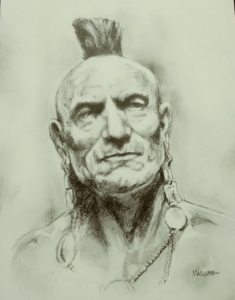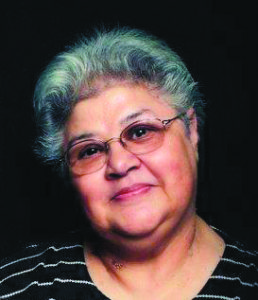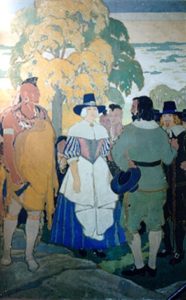

Recently, our son Thom who is a very talented artist, was asked to produce a drawing of a likeness of Chief Oratam, of the Lenape Native American Nation, for a silent auction fundraiser to be held by the PTA of the Haledon (New Jersey) Public School.
Affixed to the back of the framed drawing was a brief bio about Thom, and a brief synopsis of Chief Oratam.
This peaked my curiosity, so I did a bit of homework, and thought I’d share this story with our NWC readers.
When Verrazano sailed into Delaware Bay in 1524, and when Henry Hudson cast anchor at Sandy Hook in 1609, the land was occupied by Native American Lenape Nation who lived throughout what would become northeastern New Jersey. They were farmers, hunters, and fishermen.

The first settlement of white Europeans in New Jersey was at Bergen in 1618. This area, with the Hackensack River on one side and Overpeck Creek on the other, suited the Dutch perfectly. As one writer put it, “they thrived where they had to build dikes to keep out the river tides and could have water in their cellars 12 months a year!”
The Lenape sachem (chief), Oratam, was a respected man of peace. Oratam didn’t understand the Dutch language, and was unfamiliar with the European justice system, but he held a New Amsterdam housewife in high esteem, and relied on her wisdom and integrity in his peacemaking and diplomatic work.
Sarah Kiersted was the wife of Dr. Hans Kiersted, the doctor for the employees of the Dutch West India Company in New Amsterdam. The Kiersteds arrived in Manhattan sometime after 1626. Sarah learned the Native American Lenape language and served Chief Oratam as a translator in his negotiations with the Dutch colonists for many years.
Chief Oratam was called upon by both Europeans and Native Americans to arbitrate disputes and negotiate peace treaties, and to witness early trade contracts. Throughout his life, Oratam strove to keep peace between the Native Americans and the white men.
Why Sarah learned the Lenape language, and how she became Chief Oratam’s trusted confidante and interpreter is unknown, but she became an important participant in disputes and in treaty negotiations during the turbulent years of the Dutch settlement of the Manhattan region.
In 1638, when nearly ninety years of age, Oratam presented Sarah Kiersted with 2,260 acres of land, extending from the Hackensack River to Overpeck Creek, demonstrating his high regard for the Dutch woman who had honored the Lenapes by learning their language and devoting herself to their interests.
Sarah Kiersted retained title to the rest of the land for a long time. In 1666, after the English had captured New Netherland, although he was not legally bound by Oratam’s land grant, Royal Governor Sir George Carteret confirmed the claim of Kiersted’s gift from Oratam.
Even a hundred years later, deeds filed in Hackensack courthouse referred to the Kiersted Land Patent.
Sources: womenhistoryblog.com; njwomenhistory.org;
People reacted to this story.
Show comments Hide commentsthanks guys